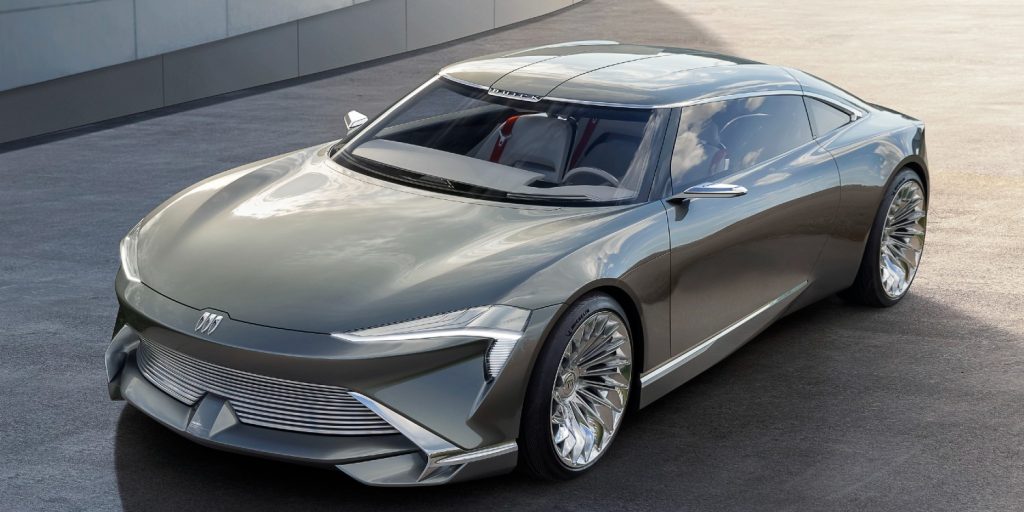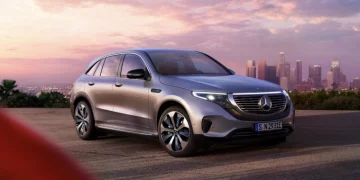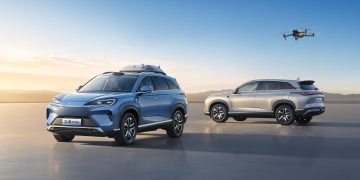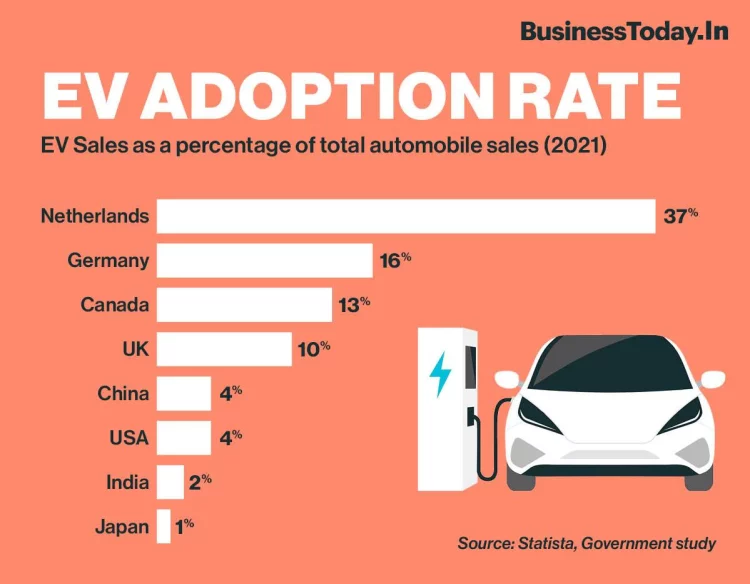Introduction: The Electric Vehicle Revolution is Just Beginning
Over the past decade, electric vehicles (EVs) have transitioned from niche products to mainstream alternatives in the global automotive market. As climate change concerns intensify, many governments, automakers, and consumers are prioritizing electric vehicles due to their environmental benefits, lower operating costs, and the shifting regulatory landscape that favors green technologies. The electrification of transportation is not just a passing trend; it is poised to reshape the entire automotive industry over the next decade.
Looking forward, the electric vehicle market is set to experience significant growth, driven by a combination of market demand, advancements in technology, evolving consumer behavior, and supportive government policies. While the current state of the EV market is still in the early stages of development, a range of factors suggest that electric vehicles will play an increasingly central role in the global transportation sector by 2035. This article aims to forecast the trajectory of the electric vehicle market over the next decade, examining key trends, sales data, and consumer behavior patterns to gauge market demand and predict what the future holds for electric mobility.
The Growing EV Market: A Rapidly Expanding Industry
The electric vehicle market has experienced impressive growth over the past few years. According to the International Energy Agency (IEA), the global stock of electric cars reached over 10 million units in 2020, marking a 43% increase from the previous year. This growth is expected to continue, with electric vehicles expected to represent 30% of all new car sales globally by 2030, and over 50% of new sales by 2035. Several factors are driving this acceleration in the EV market, including technological advancements, changing consumer attitudes, and increasingly stringent government regulations aimed at reducing emissions and combating climate change.
Rising Consumer Demand for Electric Vehicles
One of the key trends driving the growth of the electric vehicle market is the increasing demand from consumers. A combination of factors is encouraging consumers to make the switch to electric vehicles, including the rising cost of gasoline, greater environmental awareness, and the long-term financial benefits associated with electric cars. EVs are increasingly being seen as a viable alternative to traditional internal combustion engine (ICE) vehicles, as their operating costs are lower due to fewer moving parts, reduced maintenance, and the increasing affordability of batteries.
In markets like Europe and China, electric vehicles are becoming more popular with consumers, especially in cities where pollution concerns are high and government incentives for EV adoption are strong. In North America, demand is also growing, albeit more slowly. However, as new models become available from a wide range of manufacturers, including budget-friendly options, the appeal of EVs is expanding to a broader consumer base.
Competitive EV Pricing and Technological Advancements
As battery technology improves and economies of scale are realized, the cost of manufacturing electric vehicles is steadily decreasing. For example, the price of lithium-ion batteries, the primary power source for electric vehicles, has fallen by more than 80% over the past decade, making electric vehicles more affordable for consumers. According to BloombergNEF, the cost of EV batteries is expected to continue to decrease, with prices predicted to fall below $100 per kilowatt-hour (kWh) by 2030. As a result, electric vehicles will become even more cost-competitive with traditional gasoline-powered cars, driving demand even further.
Moreover, technological advancements are improving the performance and features of electric vehicles, making them more appealing to consumers. Longer-range batteries, faster charging times, and more robust charging infrastructure will address some of the major barriers to EV adoption, such as range anxiety and long wait times for recharging. Additionally, the increasing availability of electric models across various vehicle categories, from affordable compact cars to luxury sedans and SUVs, will provide more options for consumers, further fueling market growth.
The Role of Government Policies: Driving the EV Transition
Government policies and regulations play a crucial role in shaping the future of the electric vehicle market. In recent years, many governments around the world have introduced supportive policies designed to encourage the adoption of electric vehicles. These policies include subsidies, tax incentives, grants, and stricter emissions standards for internal combustion engine vehicles.
Incentives and Subsidies
Many countries offer significant financial incentives for both consumers and manufacturers to accelerate the adoption of electric vehicles. For example, the European Union provides subsidies and tax breaks for EV buyers, including reduced value-added tax (VAT) rates and grants for purchasing electric vehicles. Norway offers EV buyers a range of benefits, including tax exemptions, toll-free access, and free parking. China, the world’s largest market for electric vehicles, has also provided substantial subsidies and incentives, including rebates for EV purchases and incentives for manufacturers to produce more electric vehicles.
In the United States, the Biden administration has proposed an ambitious plan to support the electric vehicle transition, with $174 billion in investments aimed at EV infrastructure development, consumer incentives, and the electrification of public transportation fleets. These types of policies, especially in regions like Europe and North America, will continue to play a pivotal role in accelerating the shift toward electric vehicles over the next decade.

Stricter Emission Standards and Bans on Internal Combustion Engines
As concerns about air pollution and climate change continue to rise, many governments are adopting stricter emissions regulations for the automotive sector. For example, the European Union has set aggressive targets to reduce carbon emissions from the transportation sector, including a proposal to ban the sale of new internal combustion engine (ICE) vehicles by 2035. Similarly, several countries, including the United Kingdom, the Netherlands, and France, have announced plans to phase out the sale of new gasoline and diesel vehicles within the next 15 years.
These policies are likely to have a significant impact on the future of the electric vehicle market, pushing automakers to accelerate the development of electric vehicles in order to comply with emissions standards. As governments continue to implement and enforce stricter emissions regulations, the demand for electric vehicles will likely rise, and automakers will be forced to meet these new standards by increasing their production of EVs.
Advancements in Charging Infrastructure: A Key Enabler of Growth
One of the most significant barriers to widespread EV adoption has been the lack of charging infrastructure. However, the next decade will see substantial investments in charging networks, making it easier for consumers to charge their electric vehicles at home and on the go. Governments and private companies are investing heavily in the expansion of charging infrastructure, particularly in urban areas and along major highways.
Increased Availability of Charging Stations
Over the next ten years, the number of electric vehicle charging stations is expected to grow significantly. According to the International Energy Agency (IEA), the global number of charging points is projected to increase from 1.3 million in 2020 to over 40 million by 2030. This expansion of charging infrastructure will address one of the primary concerns for potential EV buyers: the convenience of charging. As the charging network expands and the time required to recharge EVs decreases, more consumers will feel comfortable making the switch to electric vehicles.
Fast Charging Technology
In addition to expanding the number of charging stations, advancements in charging technology will also play a key role in facilitating the growth of the electric vehicle market. Fast-charging technology, which allows EVs to be recharged to 80% capacity in as little as 30 minutes, is becoming more widely available. The development of ultra-fast charging stations will make long-distance travel in electric vehicles more feasible, further reducing range anxiety and encouraging consumers to adopt EVs.
Forecasting EV Sales Growth: How Will the Market Evolve?
The global electric vehicle market is expected to grow rapidly over the next decade, with some forecasts predicting that EVs could account for as much as 30% of all new car sales by 2030. As governments continue to support EV adoption and consumers become more aware of the environmental and economic benefits of electric vehicles, the demand for EVs will likely increase. The availability of a wider range of affordable EV models, coupled with continued advancements in battery technology and charging infrastructure, will further boost consumer interest in electric vehicles.
By 2030, the global stock of electric vehicles could reach over 200 million, with annual sales exceeding 30 million units. The market will likely be dominated by China, Europe, and North America, but emerging markets in Southeast Asia, India, and Latin America will also experience rapid growth as electric vehicles become more affordable and accessible.
Conclusion: The Electric Vehicle Revolution is Here to Stay
The future of the electric vehicle market looks incredibly promising, with significant growth expected over the next decade. Advances in battery technology, falling manufacturing costs, government policies, and expanding charging infrastructure will all contribute to making electric vehicles more affordable, practical, and desirable for consumers worldwide. While challenges remain, including the need for continued investments in charging infrastructure and addressing supply chain issues, the trajectory of the EV market is clear: electric vehicles are the future of transportation.
By 2035, electric vehicles will likely be the dominant choice for consumers in many parts of the world, with their share of global vehicle sales continuing to rise. As the world moves toward a more sustainable and low-emission future, the electric vehicle revolution is set to play a central role in reshaping the global automotive landscape.











































